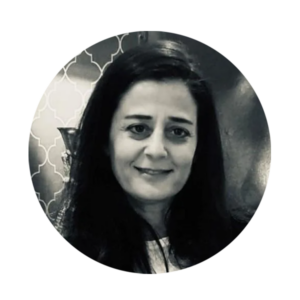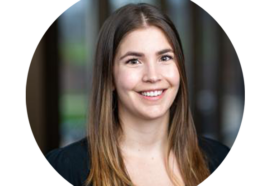TRIGGER WARNING: Please be aware that this podcast explores themes around the topic of self-harm.
If you or a person you know is struggling with their mental health, please seek support by accessing the helplines and resources provided by the NHS website. For those outside the UK please use an internet search to find an organisation that can offer direct support.
In this ‘Insights from the OxWell Student Survey’ episode, Dr. Galit Geulayov and Dr. Rohan Borschmann comment on the findings from the OxWell survey regarding self-harm behaviours as well as informal and formal support for adolescents who self-harm.
The ‘Insights from the OxWell Student Survey‘ series is a new mini-in conversation series that will explore the OxWell study and the impact of its findings for parents, teachers, policymakers and mental health professionals.
Discussion points include:
- What was measured in relation to self-harm in the OxWell student survey.
- Self-harm and loneliness.
- Gender and age differences in self-harm behaviours.
- Types of support accessed by adolescents following self-harm.
- Informal and formal support for adolescents who self-harm.
- Potential implications of the findings and plans for the next OxWell waves regarding self-harm behaviours in adolescents.
OxWell is a large-scale student survey designed to measure the wellbeing of children and young people. It looks at mental wellbeing, anxiety, indicators of vulnerability such as bullying and loneliness, school experience, access to services, safety online and many more areas. It is a joint effort between schools, young people, the NHS, local authorities and the OxWell research team at the University of Oxford’s Department of Psychiatry.
Subscribe to ACAMH mental health podcasts on your preferred streaming platform. Just search for ACAMH on; SoundCloud, Spotify, CastBox, Deezer, Google Podcasts, Podcastaddict, JioSaavn, Listen notes, Radio Public, and Radio.com (not available in the EU). Plus we are on Apple Podcasts visit the link or click on the icon, or scan the QR code.
TRIGGER WARNING: Please be aware that this podcast explores themes around the topic of self-harm.
Need support?
For those based in the UK, if you need support please use these helplines as provided by NHS website. For those outside the UK please use an internet search to find an organisation that can offer direct support. Do not suffer in silence, reach out.
- Samaritans: Confidential support for people experiencing feelings of distress or despair.
Phone: 116 123 (free 24-hour helpline). - PAPYRUS: Young suicide prevention society.
Phone: HOPELINE247 0800 068 4141 (24-hours every day, 365 days of the year).
Text: 07860039967 - CALM is the Campaign Against Living Miserably, for men aged 15 to 35.
Phone: 0800 585858 (Helplines are open 17:00pm-midnight, 365 days a year. Webchat is also available.)
Other resources
- Episode 1 – ‘Networks of Care: Insights from the OxWell Student Survey’, with Professor Mina Fazel, Dr. Emma Soneson, and Dr. Simon White
- Episode 2 – ‘Friendships and Mental Health: Insights from the OxWell Student Survey’, with Tanya Manchanda
- Episode 3 – ‘Online Behaviours and the Impact on Mental Health: Insights from the OxWell Student Survey’, with Dr. Simona Skripkauskaite and Dr. Holly Bear

Dr. Galit Geulayov is a mental health epidemiologist researching self-harm and suicide across the life course. With partners in Australia and in the UK, Galit investigates the impact of parental self-harm on offspring psychosocial and cognitive outcomes in early life. Galit is also developing a machine learning based tool for identifying self-harm in Electronic Health Records.
Galit is the self-harm research lead in the OxWell School and, within this study, Galit is exploring help-seeking behaviour following self-harm, trends in self-harm over time and self-harm in primary school children.
Previously, Galit acted as the data curator of the Multicentre Study Self-harm in England and data analyst. This study involves collecting information on individuals who present to hospitals following self-harm. Galit studied trends in self-harm over time and the relationship between socio-economic and clinical characteristics with clinical care and mortality. (Bio and image from Department of Psychiatry, University of Oxford).

Prof. Rohan Borschmann is a psychologist and visiting academic from the Centre for Mental Health and Community Wellbeing at the University of Melbourne, Australia. As the immediate past-president of the Australian Association for Adolescent Health, much of Rohan’s work focuses on the mental health of adolescents and young adults, with a particular interest in self-harm and suicide prevention. He has been based in the Department of Psychiatry at the University of Oxford since 2022, using OxWell data to examine the patterns and correlates of self-harm in secondary school students.
Transcript
[00:00:01.280] Clara Faria: Hello, welcome to the Insights from the OxWell Student Survey series for the Association for Child and Adolescent Mental Health, or ACAMH for short. This is a new mini In Conversation series that will explore the OxWell Study and the impact of its findings for parents, Teachers, policymakers and mental health professionals. I’m Clara Faria. I’m ACAMH Young Person Ambassador, and today, I have the pleasure of interviewing Dr. Galit Geulayov and Professor Rohan Borschmann, both Senior Researchers on the OxWell Student Survey.
Led by Professor Mina Fazel, OxWell is a large-scale student survey designed to measure the wellbeing of children and young people. The survey examines mental health, wellbeing, anxiety, indicators of vulnerability, such as worrying and loneliness, school experience, access to services, safety online and many more areas. It is a joint effort between schools, young people, the NHS, local authorities and the OxWell Research Team within the University of Oxford’s Department of Psychiatry.
Before we start, please be aware that this episode will be focusing on the OxWell findings on self-harm behaviours among children and young people. If you, or people you know, have been affected by this, please be aware some may find this content triggering. We encourage you to practice self-care.
If you’re a fan of our In Conversation series, please subscribe on your preferred streaming platform, let us know how we did, with a rating or review, and share with friends and colleagues.
After that long introduction, welcome, Galit and Rohan. It’s really lovely to see you both again. Can you please start with a short intro, giving an overview of what you do?
[00:01:52.850] Dr. Galit Geulayov: Thank you for having us, Clara. I’m Galit Geulayov. I’m a Researcher at the University of Oxford. My work covers a range of issues related to self-harm in young people, and I’m also the Oxford Self-Harm Research Lead.
[00:02:10.729] Professor Rohan Borschmann: Thanks, Galit and thanks, Clara, for having us on today. My name is Rohan Borschmann. I’m a Psychologist and a Visiting Professor from the University of Melbourne, in Australia. I’m currently based in the Department of Psychiatry here in Oxford and a lot of my work focuses on adolescent mental health, with a particular interest in self-harm and suicide prevention.
[00:02:31.930] Clara Faria: Thank you so much for those introductions, and again, it’s a huge pleasure to have you here to talk about such an important topic. Well, to our first question, then. Adolescents’ loneliness and self-harm have been topics of discussion and concern among young people, parents and schools in recent years. Can you tell us a bit more about what you measured in relation to self-harm in the OxWell Student Survey? What did you find?
[00:02:57.660] Dr. Galit Geulayov: So, just to give it some context. OxWell is a repeated survey and this wave of OxWell took place in 2020. So, that was during the first UK COVID-19 lockdown, and our study included secondary school students who were 12 to 18-years-old at the time of the survey. Just when we talk about self-harm, we actually refer to an act whereby a person intentionally damages or injures their body in some way, and this is regardless of why they do it.
In OxWell 2020, we asked students if they had self-harmed in the year before the survey and also, whether this happened during lockdown. And what we found was that almost 10% of students reported that they self-harmed in the year before the survey, 7% reported that they self-harmed during lockdown.
[00:03:57.750] Clara Faria: And did you ask them how they felt about being asked about self-harm?
[00:04:03.000] Dr. Galit Geulayov: So, this is an important question. Some people worry that talking to young people about self-harm might increase their distress or “put ideas in their head.” This is an expression that I heard several times before. And we didn’t ask this in this survey, but I should stress that students were informed that they didn’t have to answer any part of the survey if they didn’t wish to do so.
Now, it’s worth mentioning that other studies, which assess this issue, show that asking young people about self-harm doesn’t increase their distress or self-harm thoughts or behaviour, which is a common concern.
[00:04:47.030] Clara Faria: Thank you for clarifying such an important point, Galit. And many young people reported worsening of mental health symptoms during the COVID pandemic, and I know you published the paper about “Self-Harm and Loneliness” during the UK’s first lockdown. Can you tell us a bit more about the paper’s main findings?
[00:05:05.850] Dr. Galit Geulayov: Yeah. So, in addition to questions about self-harm, we asked the students how lonely they felt, in general, but also, whether they felt more or less lonely than before lockdown. About 17% of students reported that they often felt lonely. Almost 8% said that they felt much lonelier than before lockdown.
Now, interestingly, about 10% of young people felt that they felt much less lonely than before lockdown. So, you can see that lockdown didn’t have the same effect on everyone, and we have – our colleagues actually published a whole paper on this topic of these students who actually were doing better overall in that first lockdown in the UK.
We also found that self-harm during lockdown was more common in those who experienced more intense loneliness, and that feeling much lonelier than before lockdown was related to self-harm during lockdown. So, in other words, exacerbation in loneliness during lockdown was related to self-harm during lockdown.
Now, this doesn’t mean that loneliness causes self-harm. To address this type of question, we would need to use a different study design. So, for example, we would want to use a design that – in which we measure loneliness and self-harm over time, rather than in a single point in time.
[00:06:46.919] Clara Faria: And talking a bit more about your analysis, did you find any differences across age and gender? For example, is self-harm more prevalent among young girls? What about youths that identifies as gender non-binary?
[00:07:01.470] Dr. Galit Geulayov: So, we did. We found that self-harm was more common in girls than in boys. So, for example, 10% of girls reported self-harm during lockdown compared to 3% of boys. But I should mention that such gender ratio is quite common in this age group, and also, girls in our survey reported higher rates of loneliness. So, for example, 10% of girls reported that they felt much lonelier than before lockdown, and this is compared with 5% of boys.
Unfortunately, we didn’t ask students about gender identity in this wave of OxWell, but we addressed this issue in a later wave of the OxWell Study.
[00:07:52.379] Clara Faria: And, more recently, you both published the paper with some OxWell colleagues, which examined the different types of support accessed by adolescents following self-harm. What type of support did young people report finding most helpful?
[00:08:06.320] Professor Rohan Borschmann: So, we asked the school students whether they had accessed a whole range of different types of support in relation to their self-harm, and we divided these types of support into three main groups. So, first, there was formal support. This included things like seeing their GP or speaking with a Social Worker or a Psychiatrist, Psychologist or other mental health worker about their self-harm.
Second, there were informal sources of support. This was, essentially, their friends and family members, so perhaps their parent or a sibling, or someone in their friendship group, and finally, there were the online or phone-based sources of support, and this included things like telephone helplines or online forums and websites.
So, in terms of where the adolescents reported seeking the most help, it was actually their friends and family members. Specifically, one in three adolescents, who had self-harmed, reported seeking help from a friend and one in four went to a parent for help. But a much smaller proportion reported seeking help from the formal clinical services, with only seven to 12% reporting accessing such services. And even less commonly reported were the online and phone-based services, which only four to 8% of adolescents who had self-harmed reported accessing those.
Now, in terms of their perceived helpfulness, it, basically, mirrored where they had sought help from. So, friends and family members were reported as being the most helpful, followed by the clinical services and finally, followed by the online type services.
[00:09:38.200] Clara Faria: And Rohan, when looking at the data regarding formal and informal support for adolescents with a history of self-harm, did anything surprise you? Were there any findings that were not in line with your initial hypothesis?
[00:09:51.269] Professor Rohan Borschmann: Yeah, definitely. I was quite surprised that the online and phone-based sources of support were used by so few young people. And I say that because, you know, these sources of support are freely available, they’re often anonymous, they don’t cost anything and all you need to access them is an internet connection, which is really like oxygen to school students, right, and they can’t live without it. So, that surprised me, and also, I guess, given the huge amount of government funding that’s currently being spent on online help services, it does seem, from our data, that young people are simply not using them very often.
[00:10:27.470] Clara Faria: And that leads, actually, to our next question. I was going to ask, what can you say about the potential implications of your findings?
[00:10:35.390] Professor Rohan Borschmann: Sure. Actually, one quite important finding that I didn’t mention earlier in terms of which sources of support the students reported seeking is that almost two in five adolescents who had self-harmed reported that they hadn’t actually accessed any type of support. So, they’d literally spoken to nobody about it, which is, obviously, very far from ideal, and that was 38% of people who had self-harmed. And then, perhaps not surprisingly, more than half of these young people, the ones who hadn’t reached out for any support, also reported that they hadn’t found this very helpful. So, keeping it to themselves was typically not seen as a positive or helpful course of action.
In terms of implications, to answer your question, one of the things that we really need to explore now with young people is exactly why the online services and the clinical services were accessed so rarely, and also, why they’re not viewed as being really overly helpful. Because I think it’s only by speaking with young people themselves about their priorities and their preferences that we’ll be able to understand what they’re after and then, to design responsive health services to work with the rising number of kids who are turning to self-harm as a coping mechanism.
[00:11:45.450] Clara Faria: Definitely, and Galit, would you like to comment about the implications for parents and for peers?
[00:11:50.769] Dr. Galit Geulayov: Yeah, so, we saw here, and also in other studies, that many young people who self-harm turn to family and friends for support. So, we need to know more about the experiences of these informal support providers. We would want to better understand the impact of support provision for family and friends and also, their potential support needs.
[00:12:16.880] Clara Faria: Well, thank you so much for your time, Galit and Rohan, and looking to the future, could you share a bit about your plans for the next OxWell waves regarding self-harm behaviours in adolescents?
[00:12:28.320] Dr. Galit Geulayov: Thank you, Clara. We are currently working on a number of studies. In one study, we are looking at the changes in the prevalence of self-harm over time, using the multiple waves of OxWell, and we have four such waves, from 2019 all the way to 2023. We also study self-harm in primary school children, which is a group that has been overlooked quite frequently in the context of self-harm. And in another study, we examined the prevalence of exposure to self-harm related content online and how this might be related to self-harm behaviour.
[00:13:12.200] Professor Rohan Borschmann: Thanks, Galit. Also, we’re planning to examine what we’re calling the school experience of adolescents who self-harm, and that will involve taking quite a deep dive into the OxWell data to look at the ways that kids with a history of self-harm never get the school experience compared to their peers who don’t self-harm. And I guess this will include looking at areas such as how much they feel a sense of belonging to the school community and their sense of agency in the school, their friendship circles and experiences of bullying, and also, any experiences of detention or exclusion, and even how safe they feel at school, which is quite important. So, there’s a lot to explore there, but I think we’re likely to find some very interesting differences.
[00:13:54.120] Clara Faria: I’m very curious to see those findings when they are out. Thank you so much for your time, once again, and for more details on Dr. Galit Geulayov and Professor Rohan Borschmann, please visit the OxWell and ACAMH websites, www.acamh.org and oxwell.org. Also follow us on our Twitter @ACAMH. ACAMH is spelt A-C-A-M-H. You can listen to other podcasts in the Insights from the OxWell Student Surveys series, including episodes on friendship, self-harm, sleep and more. And don’t forget to follow us on your preferred streaming platform, let us know if you enjoy the podcast, with a rating or review, and do share with friends and colleagues. We have also linked resources for young people or caring of young people who have experienced self-harm in our landing page, or you can access those resources below the podcast.





Discussion
Very interesting.